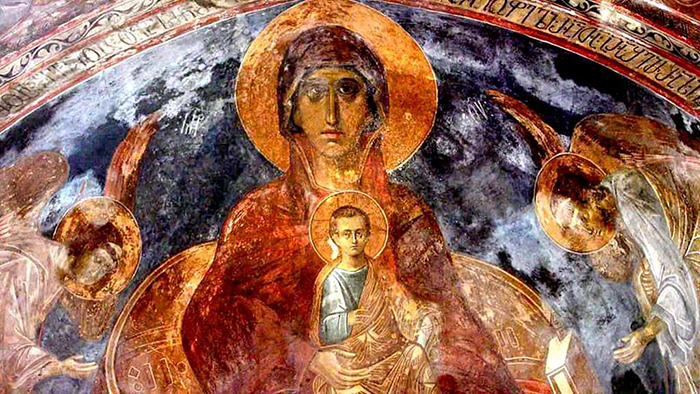THE GEORGIAN CHURCH COLLECTION
The history of the Church in Georgia and Iberia (modern-day Georgia and parts of the South Caucasus) during the Dark Ages and Medieval period is one of early Christianization, theological independence, and cultural development. Both regions embraced Christianity in the early centuries of the Christian era, and their churches played a central role in shaping their identities and cultures throughout the medieval period. Christianity arrived in Georgia in the early 4th century, making it one of the first countries in the world to officially adopt Christianity as its state religion. According to tradition, King Mirian III of Iberia (a kingdom in eastern Georgia) and his queen, Nana, converted to Christianity under the influence of St. Nino, a missionary from Cappadocia, in 317 AD. This conversion set the stage for the widespread adoption of Christianity in the region, which was solidified when King Mirian declared Christianity the state religion. The Georgian Church developed a unique identity and quickly became a significant force in both religious and political life. Although the Georgian Church initially had close ties to the Eastern Roman (Byzantine) Empire, it gradually sought to assert its independence. By the 5th century, the Georgian Church had established its own patriarchate, and its religious leaders often resisted outside influence, especially from the Byzantine Church. During the medieval period, the Church in Georgia played a crucial role in preserving the cultural and national identity of the Georgian people, particularly during times of foreign invasions. The Church was instrumental in the creation of the Georgian alphabet in the 5th century, attributed to Saint Mesrop Mashtots, which enabled the translation of religious texts and the spread of Christianity in the native language. This helped preserve Georgian literature, culture, and religious practices during a period of political instability. The Church also influenced the construction of numerous churches and monasteries, many of which remain architectural masterpieces today. Despite periods of invasion and foreign rule, such as under the Persians and Arabs, the Church in Georgia remained a vital force, nurturing the spirit of national independence and fostering a sense of unity among the Georgian people.
Iberia, located to the south of Georgia (not to be confused with the Iberian Peninsula in Europe), was another early adopter of Christianity. The Kingdom of Iberia, or the ancient kingdom of Kartli (in modern-day Georgia), was strongly influenced by the Byzantine Empire. Christianity was introduced to Iberia as early as the 4th century, and the region's rulers were pivotal in promoting the new faith. Iberia's conversion is traditionally attributed to Saint Nino, who is also credited with converting Georgia. In the 4th century, King Pharasmanes II of Iberia officially adopted Christianity as the state religion, with assistance from the Byzantine missionaries. The Church in Iberia, like its counterpart in Georgia, developed strong ties to the Byzantine Church, and the Iberian Church adopted many of the liturgical practices of the Eastern Orthodox Church. Over time, however, Iberia also sought to establish its own ecclesiastical independence. The early Iberian Church was initially under the jurisdiction of the Patriarch of Antioch, but by the 6th century, it gained more autonomy. During the medieval period, the Church in Iberia played a significant role in consolidating royal power and maintaining the kingdom's cohesion. The Church became an important political force, with the bishops often holding substantial influence over secular rulers. The Church in Iberia, like the Georgian Church, was also a patron of religious architecture. Numerous churches, monasteries, and religious schools were founded during this period, many of which served as centers of education and cultural preservation. Despite external threats from Persians, Arabs, and later the Mongols, the Iberian Church helped maintain the religious and cultural heritage of the region. The Churches in Georgia and Iberia during the Dark Ages and Medieval period were instrumental in shaping the religious, cultural, and political identities of their respective regions. Both Georgia and Iberia adopted Christianity early, and their churches developed independently, preserving unique religious practices and cultural traditions that continue to influence the region today. The Churches in both regions acted as strongholds of national identity and independence, providing leadership and cohesion during times of external threats and invasions. The legacy of the Christian faith in Georgia and Iberia is evident in their religious institutions, architectural achievements, and cultural contributions, which remain vital elements of their national heritage.

